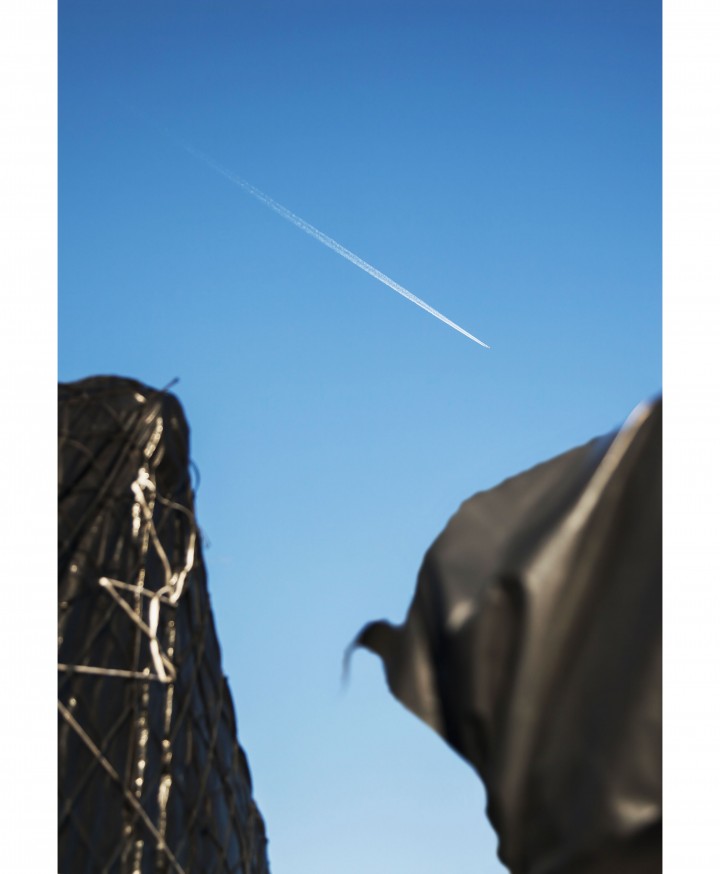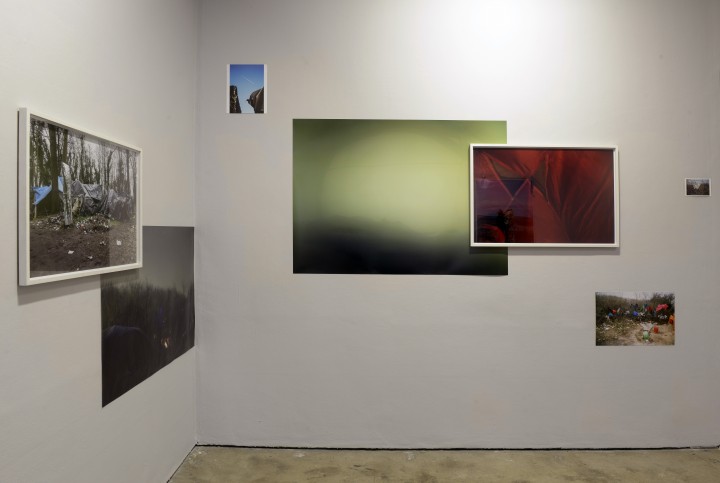Scottish Art News
Latest news
Magazine
News & Press
Publications
Iman Tajik
By David Pollock, 01.09.2018

Iman Tajik has become the first artist to have photographic works purchased by the Fleming Collection. Here he talks about his journey to Glasgow as an Iranian refugee and the forces that drive his creative process.
‘My interests are in social justice, and also to explore myself in terms of the limitations placed upon me,’ says Iman Tajik. ‘These are social limitations, the limitations of borders, all these kinds of things: how I grew up, what I face in my life, in my country and in the world.’ Tajik was born and raised in the Iranian capital of Tehran and came to the UK as a refugee, with his subsequent multimedia works reflecting his experience.
A recent graduate of Glasgow School of Art, four of his photographs of the Calais Jungle migrant camp appeared in the Fleming Collection’s Fleming at 50: Radicals, Pioneers and Rebels exhibition in Edinburgh over the summer 2018, and were purchased by the collection; the first photographic works to have been included in it.
Tajik started studying photography at high school in his native country, although he eventually went on to study design at college. His process as an asylum seeker brought him to Glasgow, and he decided to remain. ‘I was in a difficult time in my life, suffering from depression after the trauma I had from the journey,’ he says. ‘I saw the doctor, because I wanted to go back to normal life and not just stay in a room and think about what happened to me, and he said I should maybe start studying.’
He applied for a design course at Clydebank College, but after a few weeks, his lecturer realised he had a real talent for photography and suggested he change course. This was in 2012, after which Tajik went to the City of Glasgow College for his HND and finally Glasgow School of Art, from where he graduated with a first class degree.
.jpg) Iman Tajik, Can You Hear Me V', from Calais (2015). Ⓒ The Artist.
Iman Tajik, Can You Hear Me V', from Calais (2015). Ⓒ The Artist.
‘I would go to see exhibitions in Glasgow School of Art, and I realised that could be my place where I could explore myself,’ he says. ‘I went through trauma, so I needed something to bring it out, and I thought that art could do this. Even when I was studying in college, my work wasn’t journalism or commercial work. I was more interested in the idea than the technique.’
In his first year at GSA, Tajik was invited by a friend who was studying a Masters to accompany him to the Jungle refugee camp in Calais to help him make a film about it; not wanting to miss too much of his studies, particularly as he was concerned about the possible language barrier, he went for just ten days, during which time he shot the images which form the basis of this project.
‘I approached it like journalism or documentary, but I tried to show what it was really like in the camp,’ says Tajik. ‘For example, I’ve made portraits but you don’t see the faces . . . I didn’t want to show the sad eyes, instead I wanted to show the feelings of people who don’t have an identity, who don’t want to expose themselves. Ninety-nine per cent of the people in the refugee camps don’t want to expose their face or the situation in which they live.’
Why is this, does he believe? ‘I think they’re embarrassed,’ he replies. ‘Some of these people are doctors or artists, and it’s really a shameful feeling, living in such a situation. People don’t allow themselves an identity, they don’t share their real name . . . there’s such a strange atmosphere.’
Although he uses the techniques of documentary photography, Tajik isn’t so keen to be identified as such. ‘I see myself as an artist,’ he says. ‘There’s a big discussion about these things, about whether photography is art, or is it documentary or journalism. I think journalists mainly make work for what they get paid, so if they get paid from one party they get told, “go and show the refugees are bad people”. Or if they have money from another group it’s, “go and show that refugees are all perfectly nice”. I can’t really trust photography as documentary, because we just see the frame, we don’t see outside of it and we can’t 100% trust what the image is telling us. The artist is more honest, and often it’s my experience that if somebody like myself is suffering from problems and they make artwork about it, I trust this person. They have touched it with their own skin, and they transfer this feeling with honesty.’
 Iman Tajik's installation at Stills Gallery's Projects 20. © Alan Dimmick 2021.
Iman Tajik's installation at Stills Gallery's Projects 20. © Alan Dimmick 2021.
He’s extremely pleased with the recognition of the Fleming Collection, not just for the sense of validation, but for practical reasons too. ‘I’m very happy with what they’ve done, partly because I could earn some money and help pay my fees,’ he says. ‘Studying in university, especially art, is unfortunately very expensive, especially when you have no support; I used my credit card to buy what I needed for my degree show. But I think [this work being recognised is] also very important, in that we have one of the worst refugee crises in history since the Second World War. So often in the arts you see works of beauty, with nice lighting and nice colours, and you don’t see so much darkness or sadness. I think it’s good to take that on, so the future generations can know something about what’s happened in these times.’
On the table in a coffee shop in central Glasgow, he spreads examples of his other work, which demonstrates the breadth of his ability as a filmmaker and a performance artist, as well as a photographer. There are some stills from A to B, a series of films featuring a dense tangle of white string filling a wooded clearing; in one film, Tajik must navigate these awkwardly and laboriously; in another, he simply cuts his way through.
‘I was limited by the borders and by emigration,’ he says. ‘Now I want to explore myself: where I was, who I was and who I am now after crossing these borders. But now I have a chance to make art, I also feel I should use my voice to say things about immigration and about refugees. We should be free to move everywhere, but these days with politics and capitalism, we can’t.’ He points to the still from the second film. ‘That’s what I wish, to break these borders.’
Stills is currently exhibiting a selection of images from Calais and an installation of photographs & video produced as a result of Iman Tajik's visit to the ‘The Jungle’ in Calais, France, as part of Projects 20, until 19th June 2021.




